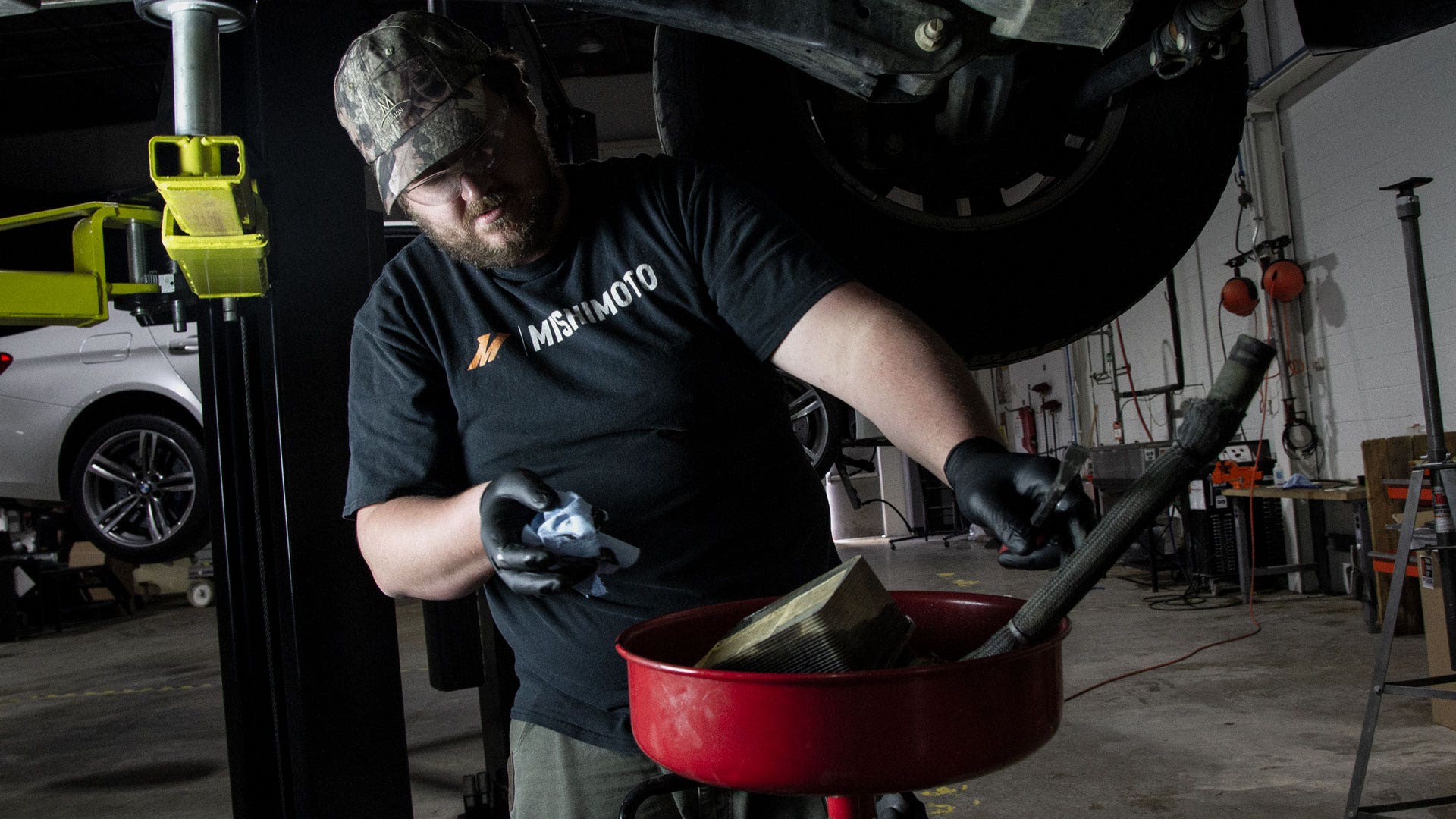
Protect the Lifeblood - Performance Oil Cooler R&D, Part 2: Design
Attention to detail is key to keeping any hardworking truck healthy. In our quest to protect the lifeblood of the 2011-2019 Ford 6.7L Powerstroke, we've thought of those details. But before we look at our design, let's recap our last post on the stock oil cooler.
The stock 6.7L oil cooler is a simple stacked-plate design that uses the engine coolant to warm and cool the oil. The inside of the cooler is separated into two sets of fins. Oil flows through one set of fins while coolant flows through the other. Once the oil temp exceeds the coolant temp, the coolant helps pull excess heat from the oil and releases it through the radiator. This design is adequate for a stock truck, but with more power, or heavy towing, comes more heat.
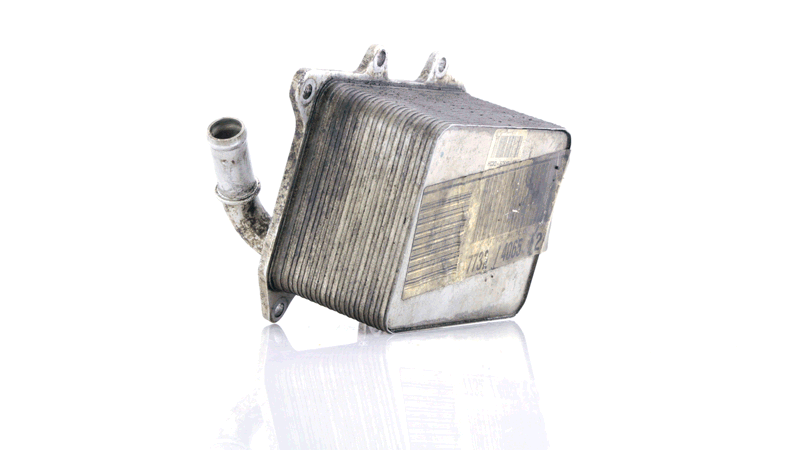
To get started on our design, we removed the stock oil coolers from our 2011 and 2017 6.7L trucks to see how we could divert oil from the engine block to our front-mounted cooler. Beneath the 2017 cooler, we found three ports on the side of the engine. Two of these ports feed the cooler oil, while the third is simply a cavity that allows the coolant to make a 180° turn back into the cooler. The coolant enters the oil cooler from a hose barb, exits into that cavity, then goes back into the core to cool the oil before exiting via another hose barb. Since we'll be eliminating the need for coolant in the new cooler, we can eliminate all of that by providing a hose to loop the coolant back into the engine.
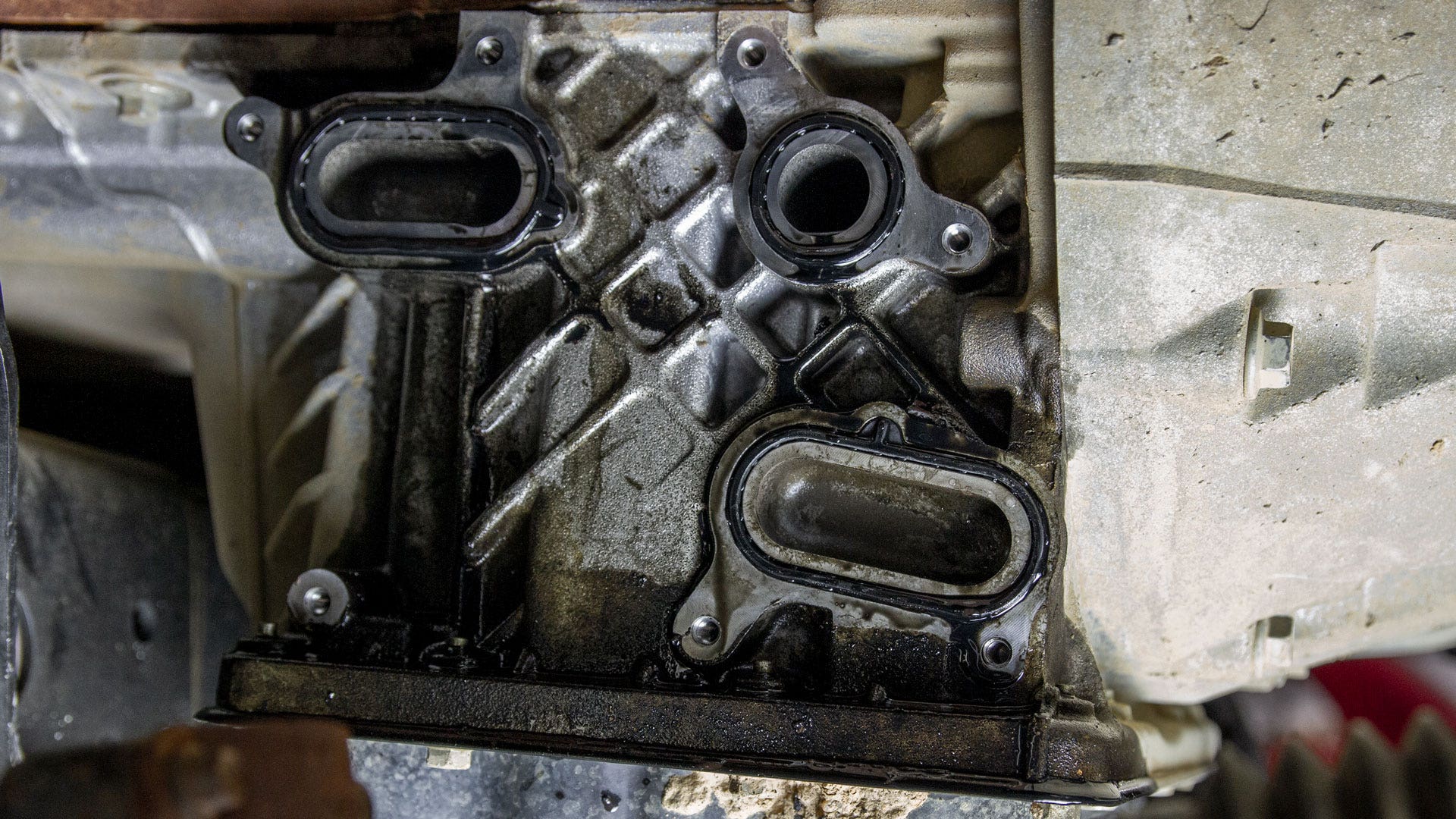
With the coolant side sorted, we turned to the oil side. Our engineer, Dan, designed an adapter plate to intercept the oil. This plate bolts in place of the stock oil cooler and has two ports that line up with the engine's oil ports. The plate seals to the block with the stock o-rings. On the other side of the plate, we'll have AN-threaded fittings to allow the use of braided steel lines. Our first prototype of this plate will use -12AN fittings and lines, but we'll be testing these lines later to make sure they aren't too restrictive.
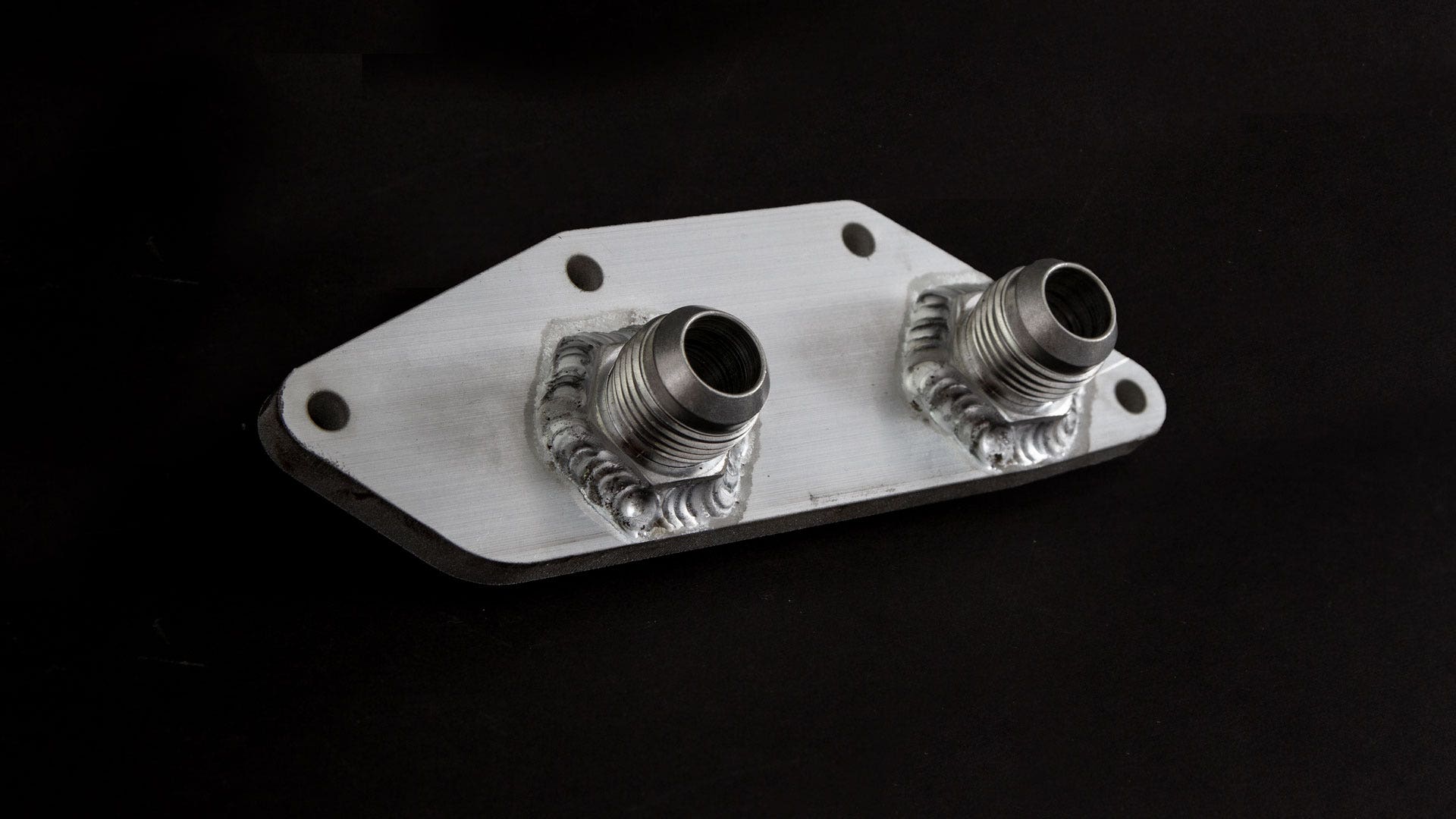
The 2011-2016 6.7L oil cooler also includes a through bolt to help support the cooler. That usually wouldn't be a problem, but Ford decided this hole needed to be drilled all the way through the side of the oil pan, so oil could potentially come out of it if it's left open. We'll make our plate cover this hole and use another Ford o-ring to seal it off to solve this issue. With all of the details ironed out, we built our prototype adapter plate. Since we'll be testing on our 2017 model-year truck, we left the lower seal off of our metal prototype to save our fabricator some time, but we 3D printed another prototype to check fitment on the 2011-2016 engine.
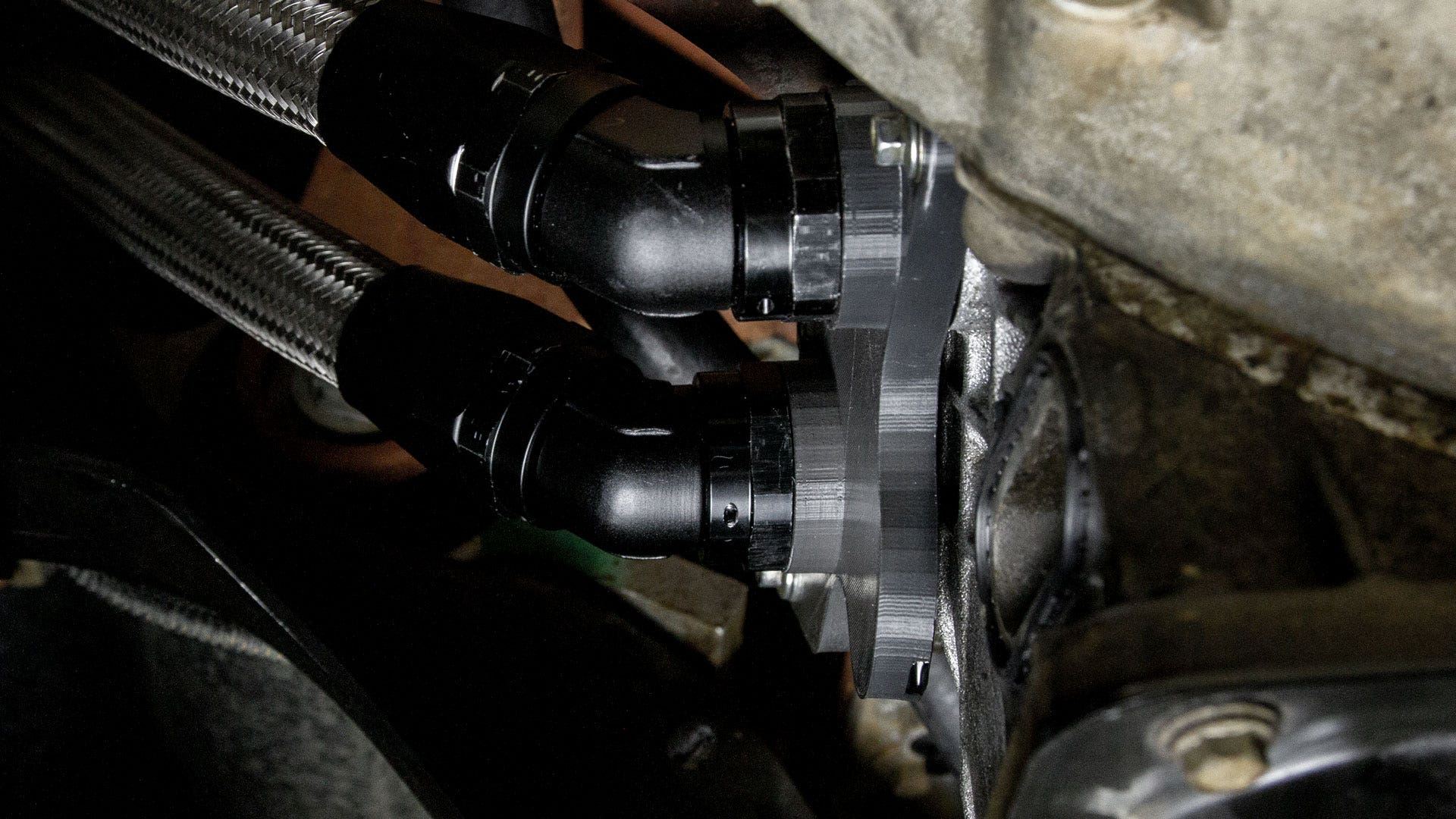
In the next post, we'll be putting our adapter to work and testing the -12AN lines and cooler to ensure we're not adding undue pressure to the oil system. Based on the results of that testing, we'll finalize our lines and brackets. So, keep an eye out for the next post, and as always, let us know what you think.
If you are in the new market for an oil cooler be sure to check out our full selection of oil cooler kits that we have
Thanks for reading!
-Steve




